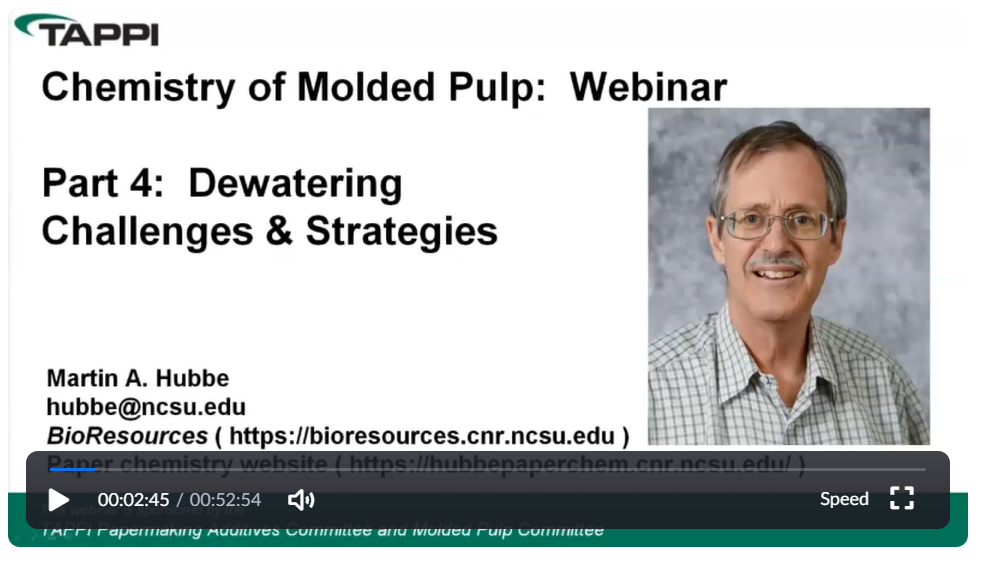 Molded Pulp, Chemical Aspects Webinar Part 4: Dewatering Challenges & Strategies
Molded Pulp, Chemical Aspects Webinar Part 4: Dewatering Challenges & Strategies
The rate of water release can be a limiting factor that determines how fast a molded pulp production facility can operate. Dewatering can be especially challenging in systems where single items are formed by vacuum onto screens. Cellulosic fines will tend to plug up drainage channels within the molded pulp item as it is being formed. Densified layers will act like seals, restricting flow out of the material into the adjacent screen surface. Drainage rates can be increased by use of chemical additives. Additives with a high positive charge density (i.e. highly cationic additives) can be helpful, but the dosage needs to be correct. A retention aid system that employs nanoparticles, such as colloidal silica, can be even more effective, but that approach runs the risk of overflocculation of the fibers. Enzymes – especially cellulase products – provide an option to increase rates of dewatering without risk of hurting the uniformity of the product.
Speaker: Martin Hubbe, North Carolina State University
Martin Hubbe, born in the papermaking town of Millinocket, Maine, earned a Masters degree at the Institute of Paper Chemistry (Appleton, WI, 1979), and a Ph.D. in chemistry at Clarkson University (Potsdam, NY, 1984). After a total of 15 years in corporate research (at American Cyanamid Corp., then International Paper), Hubbe joined North Carolina State University in 1998. As Professor and Buckman Distinguished Scientist, Hubbe teaches and conducts research related to the colloidal chemistry of cellulosic materials, with a particular focus on papermaking wet-end chemistry. Hubbe has conducted research related to paper strength, electrokinetic tests, flocculation, and dewatering. He also has chaired TAPPI’s “Introduction to Wet-End Chemistry” short course and conducted university courses for on-campus students and distance-education. The peer-reviewed scientific journal BioResources, which he co-founded and edits with Dr. Lucia, currently publishes more scientific articles than any other publication devoted to the materials science of paper and wood.
Maine, earned a Masters degree at the Institute of Paper Chemistry (Appleton, WI, 1979), and a Ph.D. in chemistry at Clarkson University (Potsdam, NY, 1984). After a total of 15 years in corporate research (at American Cyanamid Corp., then International Paper), Hubbe joined North Carolina State University in 1998. As Professor and Buckman Distinguished Scientist, Hubbe teaches and conducts research related to the colloidal chemistry of cellulosic materials, with a particular focus on papermaking wet-end chemistry. Hubbe has conducted research related to paper strength, electrokinetic tests, flocculation, and dewatering. He also has chaired TAPPI’s “Introduction to Wet-End Chemistry” short course and conducted university courses for on-campus students and distance-education. The peer-reviewed scientific journal BioResources, which he co-founded and edits with Dr. Lucia, currently publishes more scientific articles than any other publication devoted to the materials science of paper and wood.

